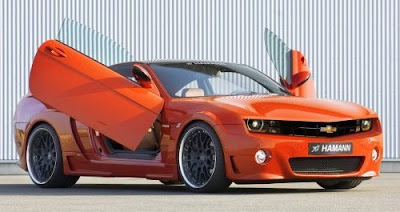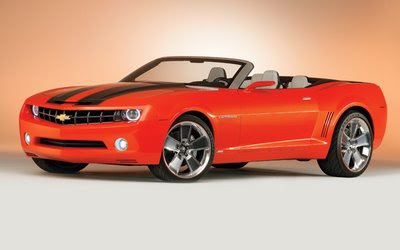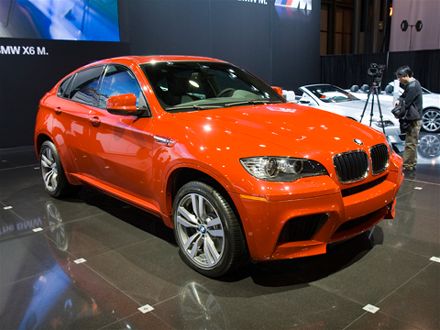dodge tuning
Dodge Viper SRT 10 Tuning
dodge tuning
Monday, February 28, 2011
ABT Volkswagen Golf R32
vw golf tuning
The german tuners from ABT Sportsline created a special tuning kit for Golf R32, an exterior kit that will make driving more thrilling. ABT Volkswagen Golf R32 has a V6 engine that could develop 370 HP. The car will accelerate from 0 to 100 km/h in just 6.2 seconds and it could reach a maximum speed of 270 km/h.
vw golf tuning
The german tuners from ABT Sportsline created a special tuning kit for Golf R32, an exterior kit that will make driving more thrilling. ABT Volkswagen Golf R32 has a V6 engine that could develop 370 HP. The car will accelerate from 0 to 100 km/h in just 6.2 seconds and it could reach a maximum speed of 270 km/h.
vw golf tuning
Labels:
abt tuning,
abt tuning vw golf
Sunday, February 27, 2011
Peugeot 207
 The Peugeot 207 is a supermini produced by the French automaker Peugeot and unveiled in January 2006. According to JATO Dynamics, an automative market researcher, the model was the bestselling car in Europe in 2007. The 207 was launched in France, Spain and Italy during April 2006 and later on in other European, Israeli and Arabic markets. The UK launch was on 8 June 2006. Amicus and the TGWU, both unions representing workers at PSA's UK manufacturing plant in Ryton, Coventry, chose the same day to launch a campaign calling for the boycott of PSA's Peugeot and Citroën vehicles in the UK. The campaign was in protest against the company's plans to close the Ryton plant. Despite the boycott the sales of Peugeot in UK grew. Not to be confused with the 207 in the Brazilian market. That model is essentially a 206+ sold in some European markets.
The Peugeot 207 is a supermini produced by the French automaker Peugeot and unveiled in January 2006. According to JATO Dynamics, an automative market researcher, the model was the bestselling car in Europe in 2007. The 207 was launched in France, Spain and Italy during April 2006 and later on in other European, Israeli and Arabic markets. The UK launch was on 8 June 2006. Amicus and the TGWU, both unions representing workers at PSA's UK manufacturing plant in Ryton, Coventry, chose the same day to launch a campaign calling for the boycott of PSA's Peugeot and Citroën vehicles in the UK. The campaign was in protest against the company's plans to close the Ryton plant. Despite the boycott the sales of Peugeot in UK grew. Not to be confused with the 207 in the Brazilian market. That model is essentially a 206+ sold in some European markets. The 207 is the successor to the 206. The 207 is based on a modified version of the platform used for the Citroën C3, and is built in Poissy and a new plant near Trnava, Slovakia. Initially three petrol engines were available: 1.4-litre 8v with 75 or 16v 90 hp (67 kW) and 1.6-litre 16v with 110 bhp (82 kW; 112 PS). From late 2006, the 1.4 & 1.6 16v models were replaced by the new 1.4 vti 95 bhp (71 kW; 96 PS) and 1.6 vti a 120 bhp (89 kW; 122 PS) Valvetronic engines. Two turbocharged versions, one with 150 bhp (112 kW; 152 PS) , and the other with 175 bhp (130 kW; 177 PS) were also added to the range. The latter four engines result from the cooperation agreement between PSA and the BMW group. The diesel-powered engines available are a 1.4 litre 70 hp (52 kW) or a 1.6 litre HDi with maximum output of 90 or 110 hp (82 kW), the latter with the addition of an intercooler. The 207 is available as a three- or five-door hatchback, a 207 SW Station Wagon and a 207 CC coupé convertible. A GTI version is available with the 175 hp (130 kW) turbocharged 1.6 litre engine. It has sold well in Britain, being the sixth best selling car overall (and third in the supermini sector) in 2007 with more than 67,000 examples being sold.
The 207 is the successor to the 206. The 207 is based on a modified version of the platform used for the Citroën C3, and is built in Poissy and a new plant near Trnava, Slovakia. Initially three petrol engines were available: 1.4-litre 8v with 75 or 16v 90 hp (67 kW) and 1.6-litre 16v with 110 bhp (82 kW; 112 PS). From late 2006, the 1.4 & 1.6 16v models were replaced by the new 1.4 vti 95 bhp (71 kW; 96 PS) and 1.6 vti a 120 bhp (89 kW; 122 PS) Valvetronic engines. Two turbocharged versions, one with 150 bhp (112 kW; 152 PS) , and the other with 175 bhp (130 kW; 177 PS) were also added to the range. The latter four engines result from the cooperation agreement between PSA and the BMW group. The diesel-powered engines available are a 1.4 litre 70 hp (52 kW) or a 1.6 litre HDi with maximum output of 90 or 110 hp (82 kW), the latter with the addition of an intercooler. The 207 is available as a three- or five-door hatchback, a 207 SW Station Wagon and a 207 CC coupé convertible. A GTI version is available with the 175 hp (130 kW) turbocharged 1.6 litre engine. It has sold well in Britain, being the sixth best selling car overall (and third in the supermini sector) in 2007 with more than 67,000 examples being sold.
Labels:
Peugeot
Jeep Grand Cherokee
 These specialty models appeared for a brief time, The Sport was slightly more equipped than the Laredo and offered a very discrete two-tone black trim interior for style. The Special Edition was introduced, priced between the Laredo and Limited, offering the same quality of the Limited, differences include the option of the 4.7 L V8 engine. The Special Edition uses the Qudra-Trac II drivetrain, which utilizes the same NV247 transfer case as the limited edition, but lacks Quadra-Drive's front and rear Vari-Lok differentials. Special Edition came with premium interior details (Instrument cluster graphics were shared with Laredo model, did not acquire white-faced gauges from Limited model), Plush Leather seats, AM-FM, In-Dash CD/Cassette along with ten-disc CD changer stowed in a well thought location in within cargo space. Special Edition Trim package from bumper to bumper was presented with a fully polished, non-textured finish. Front grille was standard issue on the Special Edition. The Overland (appropriated after the former Jeep parent, Willys-Overland) was the top-of-the-line alongside the Limited the 4.7 L High Output engine V8 debuted as the standard motor. Alongside a wealth of standard features such as plusher interior trim with "Overland" badging, mid-2003 came a revised strong black two-tone trim interior. Front and side-curtain airbags, an Infinity sound system with 10-disc changer, heated/power front seats, integrated rock rails, power sunroof, wood/leather steering wheel and 17-inch alloy wheels were also standard. The Columbia Edition offered the usual features of the other specialty models besides a strong unique two-tone interior with "Columbia Sportswear" badging, with the 4.7 L H.O. engine and GPS optional. The Freedom Edition was a modified Laredo model. Features include special badging, painted charcoal rock rails, charcoal lower-body cladding and front/rear fascias, charcoal painted wheels, silver interior accents, and optional leather seats.
These specialty models appeared for a brief time, The Sport was slightly more equipped than the Laredo and offered a very discrete two-tone black trim interior for style. The Special Edition was introduced, priced between the Laredo and Limited, offering the same quality of the Limited, differences include the option of the 4.7 L V8 engine. The Special Edition uses the Qudra-Trac II drivetrain, which utilizes the same NV247 transfer case as the limited edition, but lacks Quadra-Drive's front and rear Vari-Lok differentials. Special Edition came with premium interior details (Instrument cluster graphics were shared with Laredo model, did not acquire white-faced gauges from Limited model), Plush Leather seats, AM-FM, In-Dash CD/Cassette along with ten-disc CD changer stowed in a well thought location in within cargo space. Special Edition Trim package from bumper to bumper was presented with a fully polished, non-textured finish. Front grille was standard issue on the Special Edition. The Overland (appropriated after the former Jeep parent, Willys-Overland) was the top-of-the-line alongside the Limited the 4.7 L High Output engine V8 debuted as the standard motor. Alongside a wealth of standard features such as plusher interior trim with "Overland" badging, mid-2003 came a revised strong black two-tone trim interior. Front and side-curtain airbags, an Infinity sound system with 10-disc changer, heated/power front seats, integrated rock rails, power sunroof, wood/leather steering wheel and 17-inch alloy wheels were also standard. The Columbia Edition offered the usual features of the other specialty models besides a strong unique two-tone interior with "Columbia Sportswear" badging, with the 4.7 L H.O. engine and GPS optional. The Freedom Edition was a modified Laredo model. Features include special badging, painted charcoal rock rails, charcoal lower-body cladding and front/rear fascias, charcoal painted wheels, silver interior accents, and optional leather seats. This newfound emphasis on on-road refinement led Jeep to replace the live-axle with leading-arms front suspension (found in the ZJ and WJ) with a new design: an independent double-wishbone setup like that which debuted in the 2002 Liberty. The new Jeep changed its philosophy due to what it perceived as increasing demand in the SUV marketplace for on-road performance and decreasing demand for off-road capability. The 2007 Jeep Grand Cherokee made its European debut at the Euro Camp Jeep held in Ardèche, France. The Grand Cherokee received a minor facelift for 2008. The bottom part of the headlights became rounded, and the lower portion of the front bumper became removable to increase the approach angle for off-road use. The 4.7 L was refined, now producing 305 hp (227 kW; 309 PS), and 334 lb·ft (453 N·m). The 2009 Jeep Grand Cherokee is available with an improved 5.7 L Hemi engine rated at 357 hp (266 kW; 362 PS) and 389 ft·lbf (527 N·m) of torque. The engine uses variable valve timing to increase fuel economy.
This newfound emphasis on on-road refinement led Jeep to replace the live-axle with leading-arms front suspension (found in the ZJ and WJ) with a new design: an independent double-wishbone setup like that which debuted in the 2002 Liberty. The new Jeep changed its philosophy due to what it perceived as increasing demand in the SUV marketplace for on-road performance and decreasing demand for off-road capability. The 2007 Jeep Grand Cherokee made its European debut at the Euro Camp Jeep held in Ardèche, France. The Grand Cherokee received a minor facelift for 2008. The bottom part of the headlights became rounded, and the lower portion of the front bumper became removable to increase the approach angle for off-road use. The 4.7 L was refined, now producing 305 hp (227 kW; 309 PS), and 334 lb·ft (453 N·m). The 2009 Jeep Grand Cherokee is available with an improved 5.7 L Hemi engine rated at 357 hp (266 kW; 362 PS) and 389 ft·lbf (527 N·m) of torque. The engine uses variable valve timing to increase fuel economy.
Mitsubishi Pajero
Labels:
Mitsubishi
Noble M600
 The brakes, while servo assisted, are "barely" assisted and with no ABS it is very easy to lock the wheels. Also, according to motoring journalist John Barker, the door mirrors get in the way if one tries to look if anything is coming. He says, "The driver’s door mirror gets in the way looking into right-hand turns". It has very limited availability due to the fact that only 50 are made every year.
The brakes, while servo assisted, are "barely" assisted and with no ABS it is very easy to lock the wheels. Also, according to motoring journalist John Barker, the door mirrors get in the way if one tries to look if anything is coming. He says, "The driver’s door mirror gets in the way looking into right-hand turns". It has very limited availability due to the fact that only 50 are made every year.
2011 Mitsubishi Galant
The Mitsubishi Galant is an automobile manufactured by Mitsubishi Motors since 1969. The name was derived from the French word galant, meaning "chivalrous". There have been nine distinct generations, and cumulative sales now exceed five million. It began as a compact sedan, but over the course of its life has evolved into a larger mid-size car. Initial production was based only in Japan, but since 1994 the American market has been served by vehicles assembled at the former Diamond-Star Motors (DSM) facility in Normal, Illinois.
2011 Mitsubishi Galant
Labels:
Mitsubishi
2010 Chevrolet Camaro Hamann
 2010 Chevrolet Camaro Hamann Picture
2010 Chevrolet Camaro Hamann PictureThe fine tuner Hamann of Laupheim from the German, of all the new Chevrolet Camaro would tune, probably no one believes, specializes in the tuner but more on BMW, Ferrari, Lamborghini and Porsche. Well, do not even need to think because this is the result of 8 hours of Photoshop, found on Deviantart. Serdo Miletic can be reached as a user with the nick Morfiuss here.
Subscribe to:
Comments (Atom)












